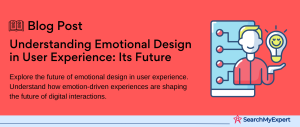Integrating User Experience and Customer Service
Defining User Experience (UX) and Customer Service (CS)
User Experience (UX):
It’s all about how a person feels when interacting with a system. This system could be a website, a web application, or any form of human/device interaction. The goal of UX is to create easy, efficient, relevant, and all-around pleasant experiences for the user.
- Challenges in UX: Balancing aesthetics with functionality, understanding diverse user needs, and ensuring accessibility for all users.
Customer Service (CS):
This refers to the support offered to customers before, during, and after purchasing products or services. It’s about ensuring customer satisfaction and nurturing a positive relationship with them.
- Challenges in CS:
Managing customer expectations, providing consistent service across various channels, and handling customer complaints effectively.
The Power of Combining UX with CS
Integrating UX with CS is not just a strategy; it’s a holistic approach to delight customers. This fusion aims to enhance the overall customer experience, leading to increased satisfaction, loyalty, and advocacy. The benefits are twofold:
- For Customers:
Seamless interactions, more intuitive support, and a feeling of being valued. - For Businesses:
Higher customer retention, more efficient service delivery, and invaluable insights from customer feedback.
By aligning UX principles with CS practices, companies can create a cohesive experience that resonates with customers on every level.
Understanding the Customer Journey
Mapping the Customer Journey Touchpoints
The customer journey is a roadmap of every interaction a customer has with your brand. It’s crucial to map these touchpoints to understand the complete customer experience. Key stages include:
- Awareness: The customer’s first encounter with your brand.
- Consideration: When a customer evaluates your products/services.
- Purchase:
The actual buying process. - Retention: Keeping the customer engaged post-purchase.
- Advocacy: When a satisfied customer recommends your brand to others.
Identifying Pain Points and Areas of Confusion
At each touchpoint, there’s potential for customer confusion or dissatisfaction. Using UX research techniques can unearth these issues:
- User Interviews:
Direct feedback on what customers like and dislike. - A/B Testing:
Comparing two versions of a touchpoint to see which performs better.
By focusing on these areas, businesses can refine their customer journey, making it more intuitive and satisfying for the user.
Designing Customer-Centric Interactions with UX Principles
Applying Key UX Design Principles
- Simplicity: The cornerstone of a good UX is simplicity. This principle is about making customer interactions straightforward and easy to understand. Avoid overwhelming customers with too much information or too many choices.
- Clarity: Ensure that every interaction is clear and unambiguous. Customers should easily understand what to do next, whether it’s navigating a website or following instructions from a customer service representative.
- Consistency: Consistent design across all platforms ensures a smooth and predictable customer experience. It helps in building customer trust and reducing confusion.
Designing for Emotional Connection
- Empathy: Understand and address the customer’s emotional state. This can be achieved by thoughtful design choices in tone, language, and visuals, making the customer feel heard and valued.
- Responsiveness: Quick and relevant responses to customer queries are crucial. The design should facilitate swift communication, whether through automated systems or human interaction.
- Personalization: Tailoring the experience to meet individual customer needs can significantly enhance satisfaction. Personalization can range from addressing customers by their names to providing recommendations based on past interactions.
Practical Tips for Customer-Centric Design
- Use clear and friendly language.
- Implement intuitive navigation in digital interfaces.
- Provide easy access to help and support options.
- Regularly update FAQs based on common customer queries.
- Gather and incorporate customer feedback for continuous improvement.
Empowering Customer Service Agents
Providing Essential Tools and Resources
- Knowledge Bases: A comprehensive knowledge base enables agents to find information quickly, ensuring accurate and consistent responses.
- Self-Service Options: Tools like chatbots and interactive FAQs empower customers to find answers on their own, reducing the load on customer service agents.
- Access to Product Information:
Ensure agents have up-to-date information about products or services to provide informed support.
Training Agents for Excellence
- Active Listening:
Training agents to listen actively to customers helps in understanding the problem fully and builds rapport. - Communication Skills:
Effective communication is key in customer service. Training should focus on clear, empathetic, and solution-oriented language. - Problem-Solving Techniques: Equip agents with strategies to approach and resolve issues efficiently, enhancing customer satisfaction.
Building Positive Customer Relationships
- Encourage agents to personalize interactions.
- Foster a supportive team environment for agents.
- Recognize and reward excellent customer service.
Leveraging Customer Feedback
Creating Effective Feedback Mechanisms
- Surveys: Implement post-interaction surveys to gather customer opinions. Keep them short, relevant, and easy to complete.
- Reviews: Encourage customers to leave reviews. Provide platforms where they can share their experiences, both positive and negative.
- Support Tickets:
Analyze support ticket data to identify common issues and trends in customer queries.
Analyzing and Utilizing Customer Feedback
- Regular Analysis:
Make it a routine to analyze customer feedback for actionable insights. - Identifying Improvement Areas: Look for recurring themes in the feedback that indicate areas needing attention.
- Continuous Improvement: Use these insights to refine and improve the UX of customer service channels. This could mean redesigning a website interface for better accessibility or tweaking the script used by customer service agents for more effective communication.
Benefits of Customer Feedback
- Helps in understanding customer needs better.
- Provides a direct line to customer thoughts and preferences.
- Facilitates data-driven decisions.
Building a Collaborative Culture
Fostering Open Communication
- Regular Meetings: Hold regular meetings between UX and CS teams to discuss insights, challenges, and opportunities.
- Shared Goals:
Align both teams around common objectives, focusing on enhancing customer experience. - Feedback Loop: Ensure there is a continuous feedback loop between the teams. What one team learns should inform the strategies of the other.
Encouraging Joint Projects
- Collaborative Projects:
Launch projects where both UX and CS team members work together. This could be anything from redesigning a help section on a website to developing a new customer feedback tool. - Cross-Training: Implement cross-training programs. Let UX designers understand the day-to-day challenges of customer service agents, and vice versa.
Creating a Customer-Centric Culture
- Celebrate successes achieved through collaboration.
- Encourage innovation and experimentation in improving customer experience.
- Recognize and reward team efforts toward achieving customer-centric goals.
Measuring Success and ROI of Integrated UX-CS Strategy
Defining Key Performance Indicators (KPIs)
- Customer Satisfaction (CSAT):
This KPI measures how satisfied customers are with your service. It’s typically gauged through post-interaction surveys asking customers to rate their satisfaction. - Resolution Rates:
This involves tracking how efficiently customer service queries are resolved. High-resolution rates signify effective customer service practices. - Net Promoter Score (NPS):
NPS measures customer loyalty by asking how likely customers are to recommend your service to others. It’s a powerful indicator of the overall customer experience.
Other Essential KPIs
- First Contact Resolution (FCR): The percentage of issues resolved during the first interaction with a customer.
- Average Handling Time (AHT):
The average time taken to handle a customer interaction. - Customer Effort Score (CES): Measures the ease of customer interaction and resolution process.
Tracking and Analyzing KPIs
- Regular Monitoring:
Set up a system for regular monitoring of these KPIs. This can be through customer service software, surveys, and analytics tools. - Trend Analysis: Look for trends in KPIs over time. Are they improving, declining, or remaining stagnant? This will help in understanding the impact of your strategies.
- Comparative Analysis:
Compare your KPIs with industry benchmarks or past performance to gauge where you stand.
Demonstrating ROI of UX-CS Integration
- Correlating Improvements with Actions: Link improvements in KPIs to specific changes made in your UX-CS strategy. This demonstrates direct ROI.
- Cost-Benefit Analysis: Evaluate the cost of implementing UX-CS improvements against the benefits in terms of increased customer satisfaction, retention, and potential revenue growth.
- Customer Testimonials and Case Studies: Use real-life examples where improved UX and CS have led to noticeable benefits for customers and the business.
Continuous Improvement
- Use KPI insights for ongoing refinement of strategies.
- Encourage a culture of data-driven decision-making.
- Celebrate and share success stories internally to motivate teams.
Conclusion
In the ever-evolving landscape of customer expectations, the integration of User Experience (UX) and Customer Service (CS) is more than just a trend; it’s a necessity for businesses aiming to thrive. This strategic fusion offers a comprehensive approach to understanding and enhancing the customer journey, ensuring that every touchpoint is an opportunity to impress and engage.
Collaborate with leading UX Design Agencies for innovative solutions.
Table of Contents
Toggle






